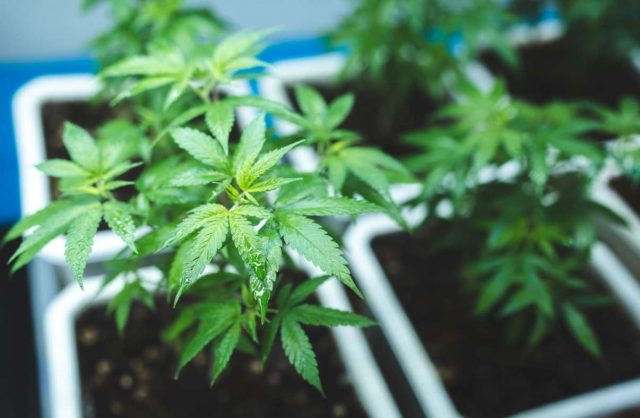We will cover the differences between male and female pot plants in this article. We will also examine their distinguishing physical traits in more detail, their function in reproduction, and the factors that affect their gender.
Anyone who cultivates cannabis, whether for leisure or therapeutic reasons, might benefit from being aware of these differences. It can assist you in planning your grow strategy, determining the gender of your plants, and eventually maximizing your harvest’s output. So, let’s dive right in!
Physical Characteristics of Male and Female Pot Plants
Male and female cannabis plants can be distinguished from one another by their distinct physical characteristics. Male plants often grow higher and less bushy than female plants. They flaunt fewer leaves and have wider branch spacing.
Flowers on male plants have a clustered growth pattern and are shaped like little balls or nuts. These clusters called “pollen sacs,” create the pollen needed to fertilize the female plants. Contrarily, female plants have blooms that are smaller and more dispersed, like little teardrops. The female cannabis seeds and buds that are used for consumption are produced by these flowers, known as “pistils.”
Being able to differentiate between male and female cannabis plants is crucial since cultivators frequently toss out male plants. This is because they can fertilize female plants, resulting in lower yields—which is bad for business.
Roles of Male and Female Pot Plants in the Reproduction Process
In the world of plants, male and female plants play quite different roles in the reproduction process. Male reproductive cells are only found in pollen, which is produced by male plants. On the other hand, female plants are in charge of making ovules, which house the female reproductive cells.
Male cannabis plants are often removed from the growing area and culled because they don’t yield the premium buds that female plants are known for. They nevertheless continue to be essential to the reproduction process by fertilizing female plants.
The male plant releases pollen, which is then delivered to the female plant by the wind or insects to begin fertilization. The pistils, the plant’s reproductive organs, receive the pollen after it reaches the female plant. The pollen is subsequently gathered by the pistils and carried to the ovules, where fertilization takes place.
After fertilization, the female plant will start to generate seeds, which are the male and female plants’ progeny. The reproduction cycle can then be continued by using these seeds to cultivate fresh cannabis plants. (1)
Factors That Influence The Gender of Pot Plants
If you are considering growing cannabis for both recreational and therapeutic purposes, the gender of the plants is a crucial consideration. The ability to produce particular substances, as well as a pot plant’s general growth and development, are determined by gender. Growers can better forecast and manage the gender of their plants by understanding the elements that affect them.
Genetics is one of the main determinants of the gender of cannabis plants. The chromosomes cannabis plants acquire from their parents determine their gender, similar to how humans are born with specific chromosomes. The genetic tendency for being male or female varies across different cannabis plant strains. For example, some strains are more likely to produce male plants, while others are more likely to produce female plants.
The environment in which pot plants are cultivated is another factor that affects their gender. Cannabis plants are perceptive to their surroundings and are susceptible to changes in temperature, light, and humidity, among other environmental conditions. Cannabis plants, for instance, can develop more male flowers when under intense stress, such as when they are deprived of water or light. On the other side, giving plants the best conditions for growth can promote the development of female flowers.
Lastly, the gender of the plant can also be influenced by the timing of its flowering stage. Once they enter the flowering stage, which often happens after several weeks of vegetative growth, cannabis plants will start to generally display their gender. The tension and the growth environment can, however, affect the precise timing of this stage. For instance, plants grown in hotter areas might start flowering earlier than those grown in colder climates. (2)
The Bottom Line
Male and female pot plants differ physically and play separate functions in reproduction. Female plants carry the flowers, which are where the plant’s reproductive organs are found, while male plants produce pollen. Numerous elements, including the plant’s genetic makeup and the environment in which it is grown, can affect the gender of potted plants. According to Herbies – a top-rated seed bank, producers who want to produce effective cannabis crops should understand these differences.


